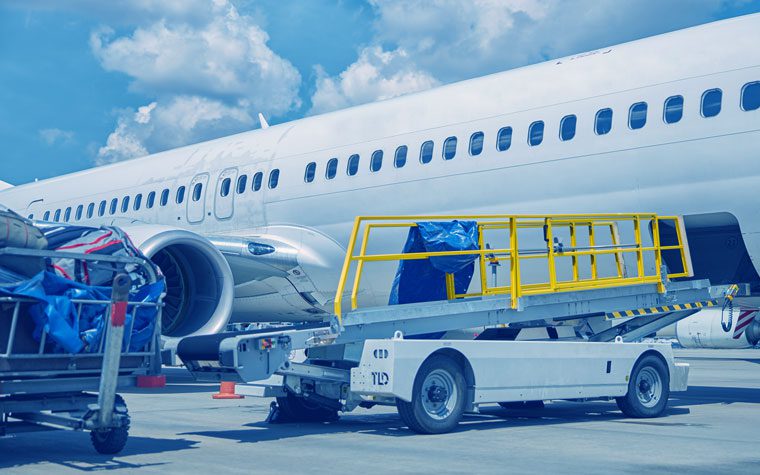
5 Futuristic Innovations Ready to Disrupt the Aircraft GSE Industry
In this ever-evolving Aviation industry, Ground Support Equipment (GSE) has become an integral part of all airport operations. Today, GSE is instrumental to aircraft maintenance, cargo operations, and passenger assistance as well. This has been the result of significant technological enhancements in aircraft GSE in recent years, thereby leading to improved vehicle control, increased docking accuracy besides minimizing the chances of damaging the aircraft and lowering the risks of personnel injury. In fact, in 2022, the International Air Transport Association (IATA) called for a transition to enhanced GSE in order to improve cost-efficiency and safety.
Among all the other tech-led disruptions expected in the near future, here are the top-5 innovations that has the potential to reshape the way the Aircraft GSE industry operates.
1. Electric GSE
With global efforts towards reducing greenhouse gas emissions, electric GSE has gained popularity lately. Electric GSE or eGSE provides a cleaner and more sustainable alternative to traditional GSE powered by fuel. Manufacturers like TLD and Mototok have been producing electric tow tractors, baggage tugs, and pushbacks.
Deploying eGSE technologies can be a promising solution for airlines wherein they could partially benefit from fuel diversification since they are exposed to a high petroleum price volatility. Moreover, one can say that aircraft GSE is particularly well-suited for electrification since it can benefit from idle time, low-end torque and frequent start/stops. Operators are preferring the application of eGSE due to its multiple features including the “inching device” that allows them to stand right behind luggage tugs and inch them into the luggage trailer hitch. Most importantly, with electric GSE, electric chargers can be used throughout airports instead of diesel refueling stations. This significantly reduces non-productive travel and GSE traffic.
2. Cloud-Based GSE Management Systems
It is crucial for GSE operators to keep measuring various inputs such as usage, mean time between failure, labor costs, parts costs, productivity etc. to improve operational efficiency. Adoption of cloud-based GSE management systems has transformed the way airports manage their GSE operations. These systems offer real-time data and predictive analytics, allowing operators to seamlessly track across geos, performance, and utilization of GSE assets from a central location. This also allows for better asset monitoring, asset lifecycle management, reduced number of workplace incidents, compliance to airport regulatory affairs and authority, as well as enhance safety of the operators.
3. Autonomous GSE
Autonomous vehicles are no longer a futuristic concept – they are very much here and already spearheading significant improvements in the airport operations, although in limited use cases. These units are equipped with sensors and GPS systems that enable them to move and operate without human intervention. Companies such as Avidbots and TLD have been pioneers in this field.
Optimization software-driven autonomous GSE, which incorporates robotics, machine learning (ML), artificial intelligence (AI) and proprietary algorithms, will also prove to be an asset in addressing safety problems that can otherwise stem from human errors. Moreover, with telematics applied in autonomous GSE, it will help ensure enhanced data transparency and situational awareness, such as providing the estimated time of arrival to the connecting gate for wheelchair-bound passengers or for tail-to-tail rides.
4. Hybrid GSE
Hybrid GSE provides a mix of electric and traditional fuel propulsion. This leads to improved fuel efficiency, reduced emissions, and better overall environmental performance. Hybrid GSE has been developed by companies such as TLD and BEUMER Group.
5. Augmented Reality in GSE Maintenance
Augmented Reality (AR) technology has been used to provide better visualization and guided repair procedures during GSE maintenance. AR-based platforms provide MRO technicians and aircraft mechanics with a 3D virtual view of the GSE equipment, thereby making diagnosis and repairs more efficient. There are now VR headsets, infrared cameras, and touchpads available that allow technicians to conduct inspections in a completely immersive environment.
These innovations will allow the aircraft GSE industry to be more efficient, sustainable, and cost-effective. As technology continues to advance, we can expect to see more exciting developments in aircraft GSE, which are certainly here to stay. The IATA has also called out to the aviation industry to clock net-zero carbon emissions by 2050, and it will take tremendous efforts and innovations on part of the airports as well to achieve this goal. However, by starting today, airlines and airports will be able to get prepared for the inevitable transition that not only promises productivity optimization, but also demonstrates their commitment to the environment.

